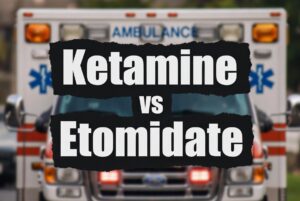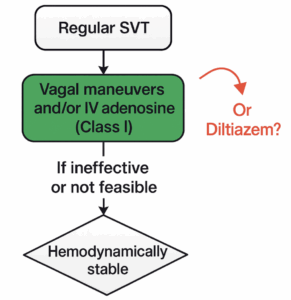by Clayton Kazan, MD, MS, FACEP, FAEMS
About four years ago, I wrote an opinion piece for the NAEMSP blog entitled, We Gave an Inch, They Took a Mile about ambulance patient offload time (APOT). So, now that the problem is solved, we can move on to more pressing issues, right? I can’t comment about your system, but APOT in my system is the worst it has ever been. I saw situations during pandemic peaks that I never thought I would, and I hope I will never experience again…walking up and down rows of parked ambulances at our hospitals, occupied with dying patients and no place to put them. Like so many other things, the pandemic exacerbated existing EMS system weaknesses. In December 2020, we had two patients surpass 24 hours on the ambulance wall. In the winter of 2021-2022, the Omicron surge exploded and impacted EMS workforce to the point that, in combination with APOT, we were routinely queuing calls for available ambulances and transporting patients in paramedic squads, law enforcement vehicles, and fire engines just to get them to the hospital.

This is a two-pronged problem. One, we have to own, and the other, the hospitals must own. First, we have to stop allowing the ED to be the triage point for all patients reaching out to the EMS system. It is an unsustainable bottleneck, and the fact that we have come to expect a multi-hour wait in the ED is a prime example of normalization of deviance. In 2019, we were able to launch and expand a pilot for select mental health patients to be transported to psychiatric urgent care centers (PUCCs). It’s noteworthy because we had lobbied for this, at the state level, since 2018, only to be successfully resisted by, among other groups, California ACEP and the California Nursing Association. We managed to get our pilot approved in 2019 and a law pushed through in 2020 (AB1544), ironically with Cal ACEP support, creating a framework for transporting patients to PUCCs and sobering centers, but this is just scratching the surface of where we need to go. A 911 call should not, necessarily, have to result in an EMS transport and ED visit. We have multiple opportunities from dispatch through transport to offload appropriate calls to alternate levels and forms of care. We have to continue to advocate and innovate for our patients to be evaluated upstream of EMS transport and treated in the most appropriate place, at the right time, and at the right cost. The capacity to care for our high acuity patients demands it, and, we cannot reasonably expect our hospital and ED colleagues to actively lobby for fewer patients. We have to carry the torch.
The other prong lays squarely with the hospitals, and that is APOT. On this issue, with EMTALA squarely behind us, we are in a position of strength. Patient care responsibility transitions from EMS to the hospitals as soon as they are made aware that there is a patient on their property seeking care in the ED. (Great article from EMS1 on this topic) Responsibility does not transition at the point that the patient is moved to a hospital stretcher or the hospital staff are willing to accept a turnover report. Once we arrive with our patient and lock eyes with hospital staff, patient care responsibility has transferred, whether it has been accepted or not. In countless stakeholder meetings on the topic, the consistent message from the hospitals is that they are handcuffed by a broken healthcare system with APOT as the inevitable result. As an emergency physician, of course I am sympathetic to the plight of the hospitals and our ED colleagues, but we cannot allow hospital throughput dysfunction to consume the 911 system…which it surely will if we do not actively defend it. We have to advocate for patients in the streets that cannot get timely critical care because our units are held up at the hospitals. We argued, pre-pandemic, that, if our EMTs could watch hospital patients on the ambulance wall, then hospital employed EMTs could do the same. We could not get hospitals to hire their own EMTs for this purpose until, during the pandemic, the state sent EMS personnel to decompress the hospitals by offloading EMS patients, and guess what? It worked swimmingly at reducing APOT. We need to keep the lines of communication with the hospitals open, but we also need to advocate with regulatory agencies to hold hospitals accountable to their EMTALA obligations, which includes managing patients on their ambulance walls with acute life-threatening emergencies and not allowing a patient to see a second day dawn before being placed in an ED bed.
About the Author: Clayton Kazan is the medical director of Los Angeles County Fire Department, President of the California Chapter of NAEMSP and Chair of NAEMSP Communications & Social Media Committee.



